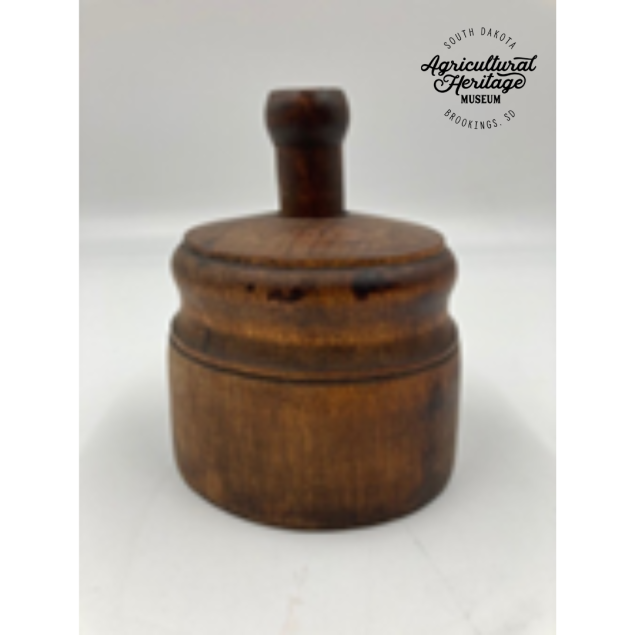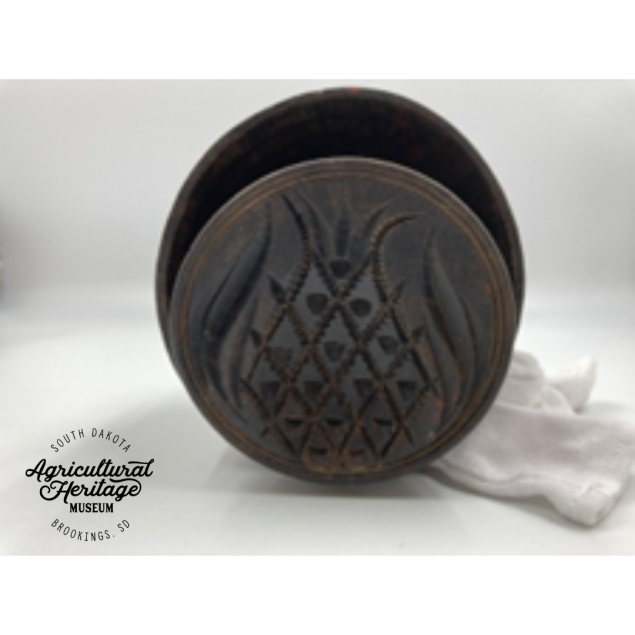

Butter molds were used to shape and mark butter before it cooled and hardened. Antique butter molds are often made of wood but can be made of glass or metal. The wooden mold is turned on a lathe and the stamps are hand carved. They were commonly made from cherry wood, maple wood or poplar. Other wood that was available was used, too. Butter molds can be found in 1 pound, half pound, quarter pound and single pat size. Late in the 19th century, molds went from being hand turned and carved to mass produced. The pictured butter mold is lathe turned and holds one pound of butter. It has a pineapple design and is stamped with “Pat. Apr 17, 1866.”
Stamped designs added visual appeal to table butter and acted as a trademark identifying the farm or the dairy selling the butter. Common designs found on butter molds include wheat sheaves, thistles, cows, sheep, hens, roosters, flowers, stars, acorns and pineapples. The pineapple is an old symbol for hospitality.
Sears, Roebuck and Company offered in their 1897 catalog maple wood molds, either square or round. The molds they sold were half pound, 1-pound and 2-pound molds with fancy carving or Jersey cow design. Depending on the design and shape of the mold, they sold for various prices between 13 cents and 30 cents each.

